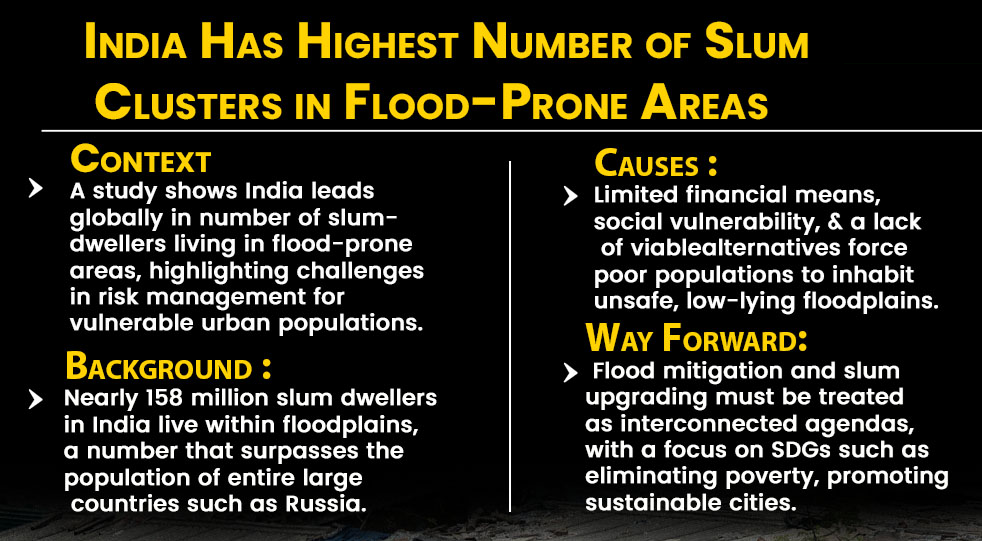PREVIOUS
World’s highest number of slum clusters
July 31 , 2025
2 days
79
0
- According to a 2024 Moody’s report, more than 2.3 billion people are exposed to flooding every year.
- The study was published in Nature Cities in July 2025.
- In India, more than 600 million people are at risk of coastal or inland flooding.
- India has the world’s highest number of slum clusters in flood-prone areas.
- More than 158 million slum-dwellers in India live in vulnerable settlements in floodplains.
- It is more than the population of Russia.
- Most of them concentrated in the Ganga River delta.
- The largest concentrations and largest numbers of such people are in South Asian countries.
- Northern India leads in absolute numbers.
- It is followed by Indonesia, Bangladesh, and Pakistan.
- Other notable ‘hotspots’ include Rwanda and its neighbourhood, the northern Morocco, and the coastal regions of Rio de Janeiro.
- Overall, in the Global South, 33% of informal settlements, making up around 445 million people living in 908,077 households within 67,568 clusters.
- They lie in areas that have already been exposed to floods.
- Countries like India and Brazil also have a disproportionately high number of floodplain settlements.
- The researchers classified human settlements as rural, suburban, and urban.
- Latin America and the Caribbean had high rates of urbanisation (80%).
- And thus, more than 60% of settlements were in urban areas.
- In contrast, Sub-Saharan Africa had the lowest rates of urbanisation, and nearly 63% of informal settlements were rural.
- In Sierra Leone and Liberia, informal settlements hosted most of the population.
- In India, at the time of the study, 40% of slum dwellers resided in urban and suburban areas.
- In India and Bangladesh, the low-lying Gangetic delta and the large national population contribute to the numbers.
- People settle in, or are forced to settle in, floodplains due to a combination of factors, including access to jobs, social vulnerability, and financial constraints.

Leave a Reply
Your Comment is awaiting moderation.


